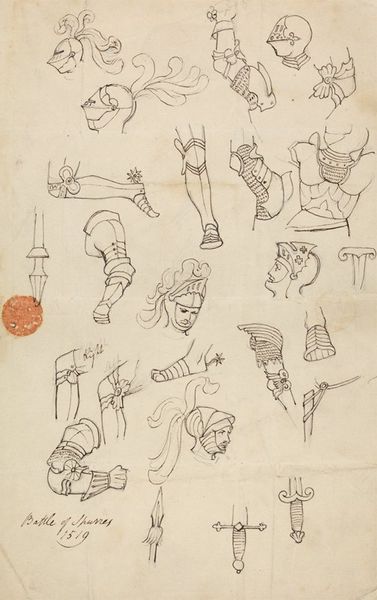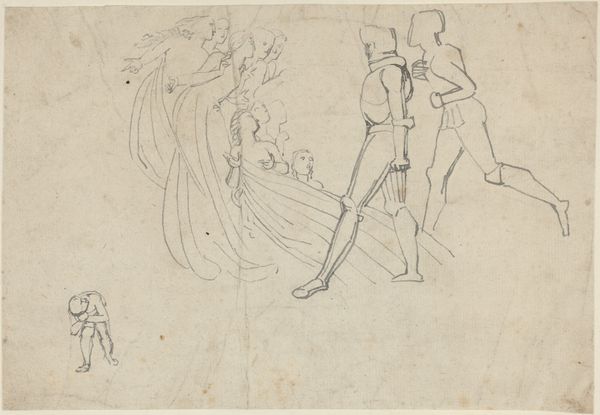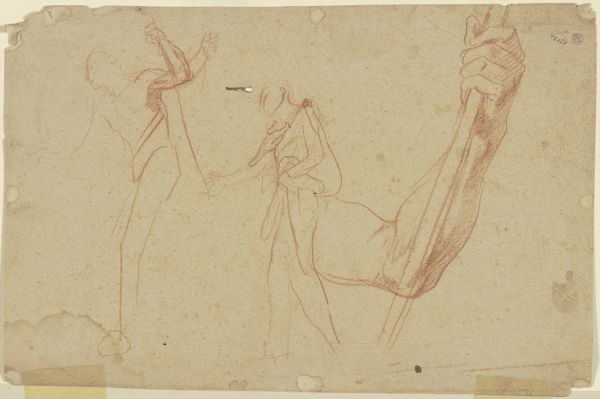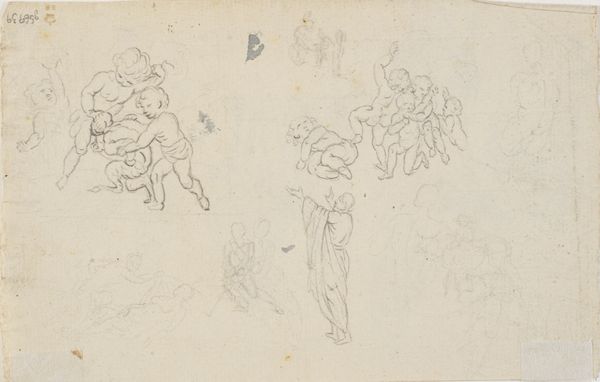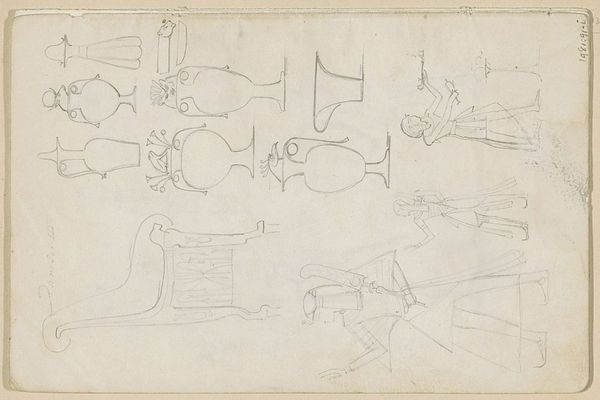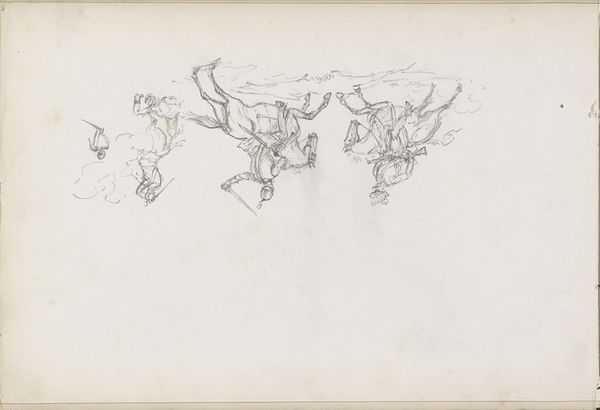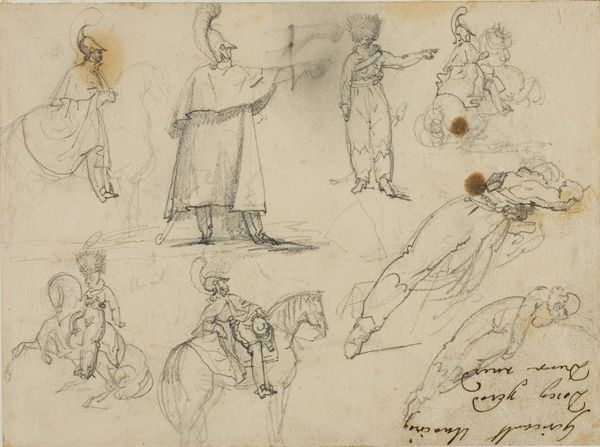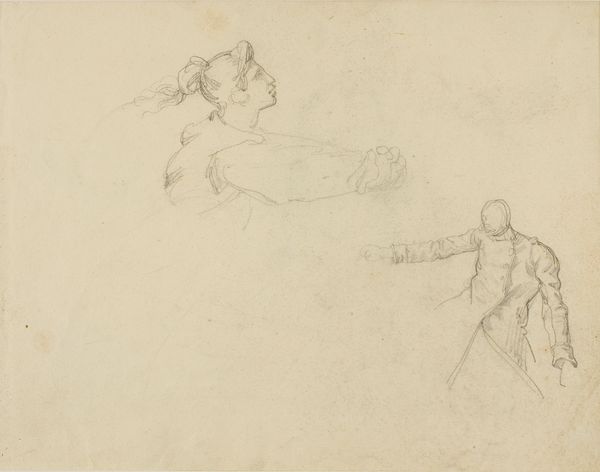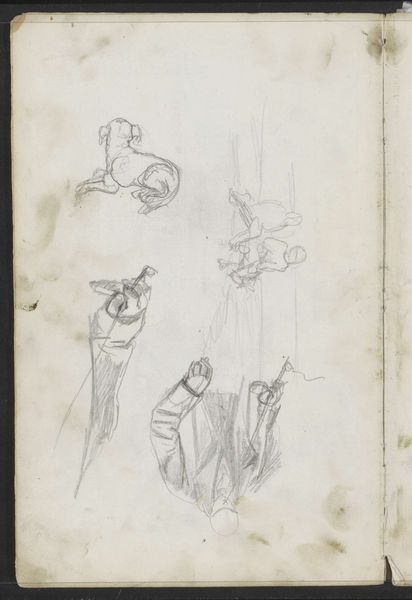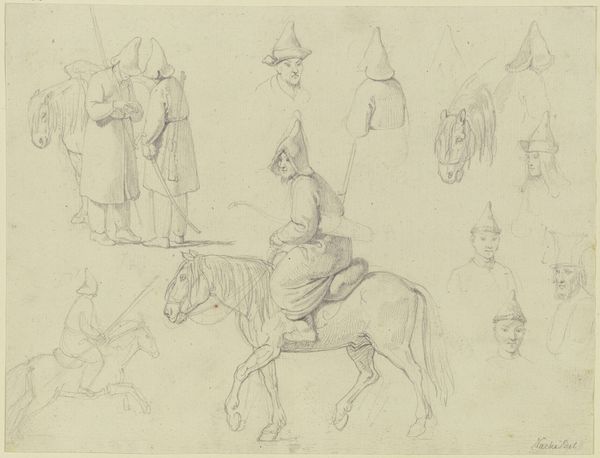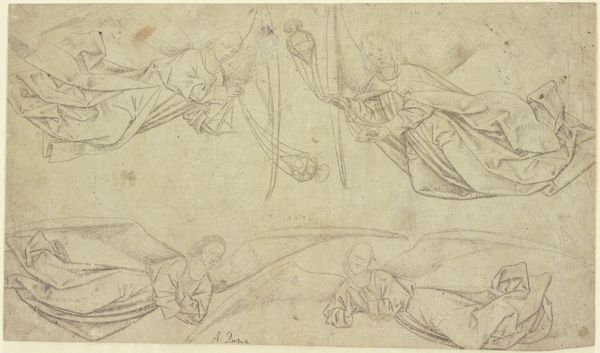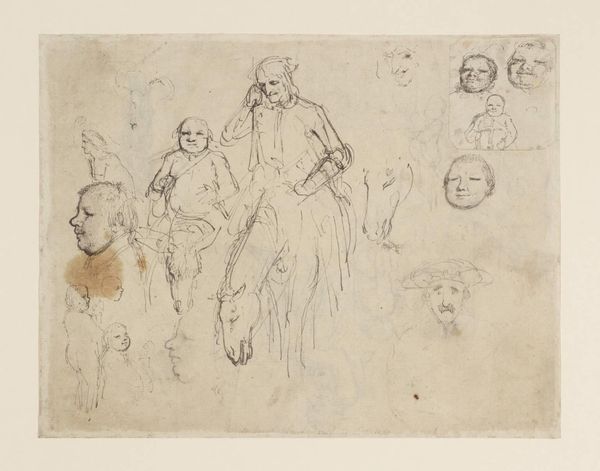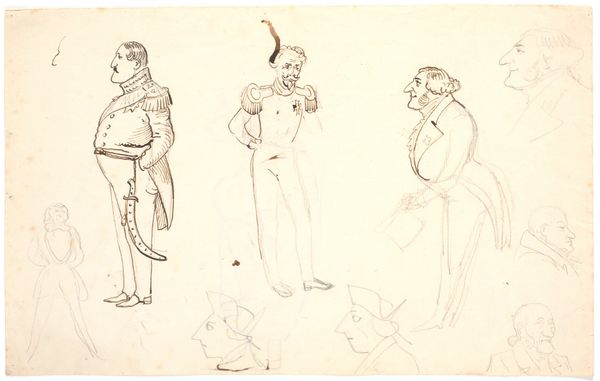
Hovedet af Gabriel iGuido Renis Bebudelsen, Rom, Palazzo Quirinale 1600 - 1700
0:00
0:00
drawing, pencil
#
portrait
#
drawing
#
pencil sketch
#
figuration
#
pencil
#
history-painting
#
academic-art
Dimensions: 270 mm (height) x 185 mm (width) (bladmaal)
Editor: So, this is "Studies of Soldiers" by C.W. Eckersberg, placing it somewhere between 1783 and 1853, sketched with pencil. It feels like a peek into the artist’s sketchbook. There are figures on horseback interspersed with what appear to be Grenadiers or Guardsmen, standing in very formal poses. What’s your take? Curator: It absolutely has the intimate quality of a sketchbook, doesn’t it? Eckersberg, known as the father of Danish painting, uses these figures almost as a means to explore perspective and form, don't you think? Editor: Yes, definitely! It's fascinating how some figures are so sharply defined while others fade into ghostly outlines. How does this looseness add to the effect of the work? Curator: That's the charm! The loose sketching allows him to experiment, to find the perfect posture or the precise fall of light. The spectral figures? They're the echoes of his creative process, all still visible in this palimpsest, this layering of ideas! But it makes me wonder, does their ghostliness give you any feelings in contrast to the rigidity of the others? Editor: Now that you point that out, I see a fragility, maybe? As though military might is as transient as the sketch lines themselves. Curator: Precisely! Eckersberg's brilliance lies in capturing that inherent tension - between permanence and fleetingness, the idealized and the real. So do you see now, a soldier merely posing isn’t merely a soldier; that every artist has their agenda of perspective. Editor: Definitely. What struck me as a casual study now reveals so much more. The visible creative process adds depth to the stoicism of the guards. It is really great! Curator: And for me, seeing your fresh interpretation reminds me why art should never be set in stone. Its purpose and nature should be fluid to allow space for any and all that wish to understand it.
Comments
No comments
Be the first to comment and join the conversation on the ultimate creative platform.
